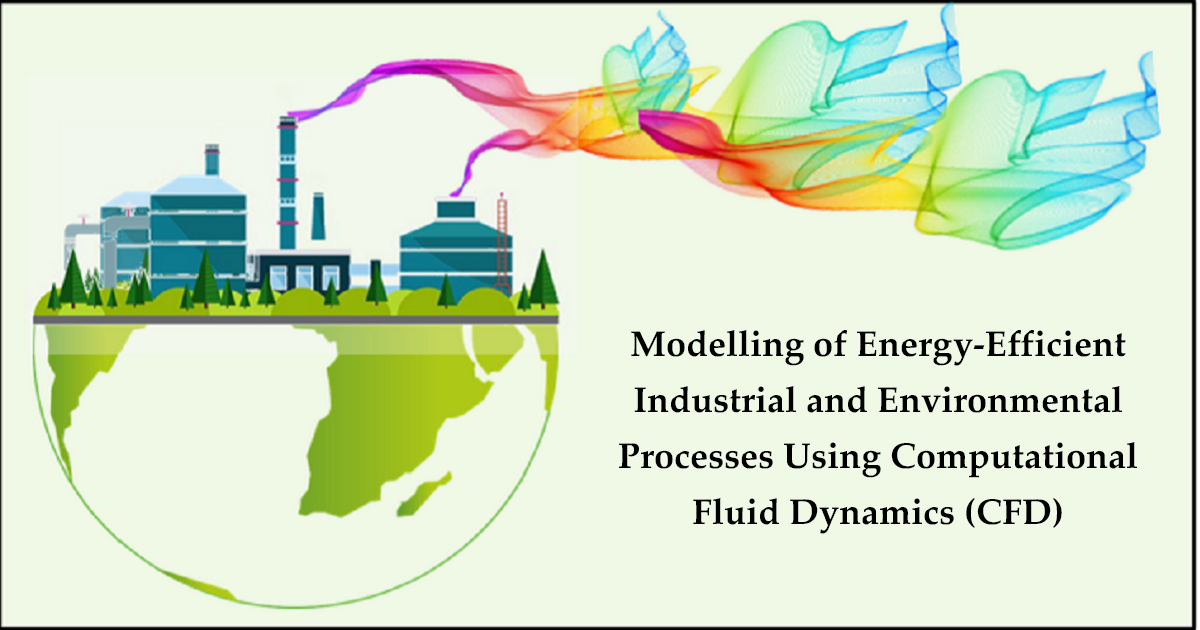Modelling of Energy-Efficient Industrial and Environmental Processes Using Computational Fluid Dynamics (CFD)
A special issue of Energies (ISSN 1996-1073). This special issue belongs to the section "J: Thermal Management".
Deadline for manuscript submissions: closed (5 March 2024) | Viewed by 9285

Special Issue Editor
Interests: geothermal energy; solar energy; transport in porous media; heat and mass transfer; waste energy recovery; CFD; design optimization
Special Issues, Collections and Topics in MDPI journals
Special Issue Information
Dear Colleagues,
Industrial and environmental processes span many science and engineering disciplines and include different transport phenomena such as mass, momentum, and energy transfer. Modeling these processes is important for designing, optimizing, and assessing the performance of the systems involving such processes. Simulating the industrial and environmental processes include sometimes Multiphysics which led to highly coupled and nonlinear equations which require numerical methods to solve. Computational Fluid Dynamics (CFD) is a well-established numerical method for solving problems that involve fluid flow, heat transfer, mass transfer, and chemical reaction. In recent years, CFD has been heavily used to simulate complex industrial and environmental processes giving the dramatic growth in computational power and the development of open-source and commercial CFD packages.
This Special Issue aims to present and disseminate the most recent advances related to the numerical modeling of industrial and environmental processes using CFD. Topics of interest for publication include, but are not limited to: CFD simulation of industrial processes in primary (extraction and agriculture) or secondary (manufacturing including additive manufacturing) levels as well as environmental processes that involve the interaction of water, air, and soil with the humans and biosphere.
Processes include single and multiphase flows, sensible and latent heat transfer, mass transfer, separation, absorption, adsorption, thermal stresses, optimum design of industrial equipment, heat exchangers, reactors, cooling towers, and environmental flow processes.
Dr. Mostafa H. Elsharqawy
Guest Editor
Manuscript Submission Information
Manuscripts should be submitted online at www.mdpi.com by registering and logging in to this website. Once you are registered, click here to go to the submission form. Manuscripts can be submitted until the deadline. All submissions that pass pre-check are peer-reviewed. Accepted papers will be published continuously in the journal (as soon as accepted) and will be listed together on the special issue website. Research articles, review articles as well as short communications are invited. For planned papers, a title and short abstract (about 100 words) can be sent to the Editorial Office for announcement on this website.
Submitted manuscripts should not have been published previously, nor be under consideration for publication elsewhere (except conference proceedings papers). All manuscripts are thoroughly refereed through a single-blind peer-review process. A guide for authors and other relevant information for submission of manuscripts is available on the Instructions for Authors page. Energies is an international peer-reviewed open access semimonthly journal published by MDPI.
Please visit the Instructions for Authors page before submitting a manuscript. The Article Processing Charge (APC) for publication in this open access journal is 2600 CHF (Swiss Francs). Submitted papers should be well formatted and use good English. Authors may use MDPI's English editing service prior to publication or during author revisions.
Keywords
- CFD
- industrial process
- manufacturing
- environmental process
- numerical simulation
- optimum design
- heat and mass transfer
- single and multiphase flow
- industrial equipment
Benefits of Publishing in a Special Issue
- Ease of navigation: Grouping papers by topic helps scholars navigate broad scope journals more efficiently.
- Greater discoverability: Special Issues support the reach and impact of scientific research. Articles in Special Issues are more discoverable and cited more frequently.
- Expansion of research network: Special Issues facilitate connections among authors, fostering scientific collaborations.
- External promotion: Articles in Special Issues are often promoted through the journal's social media, increasing their visibility.
- Reprint: MDPI Books provides the opportunity to republish successful Special Issues in book format, both online and in print.
Further information on MDPI's Special Issue policies can be found here.





